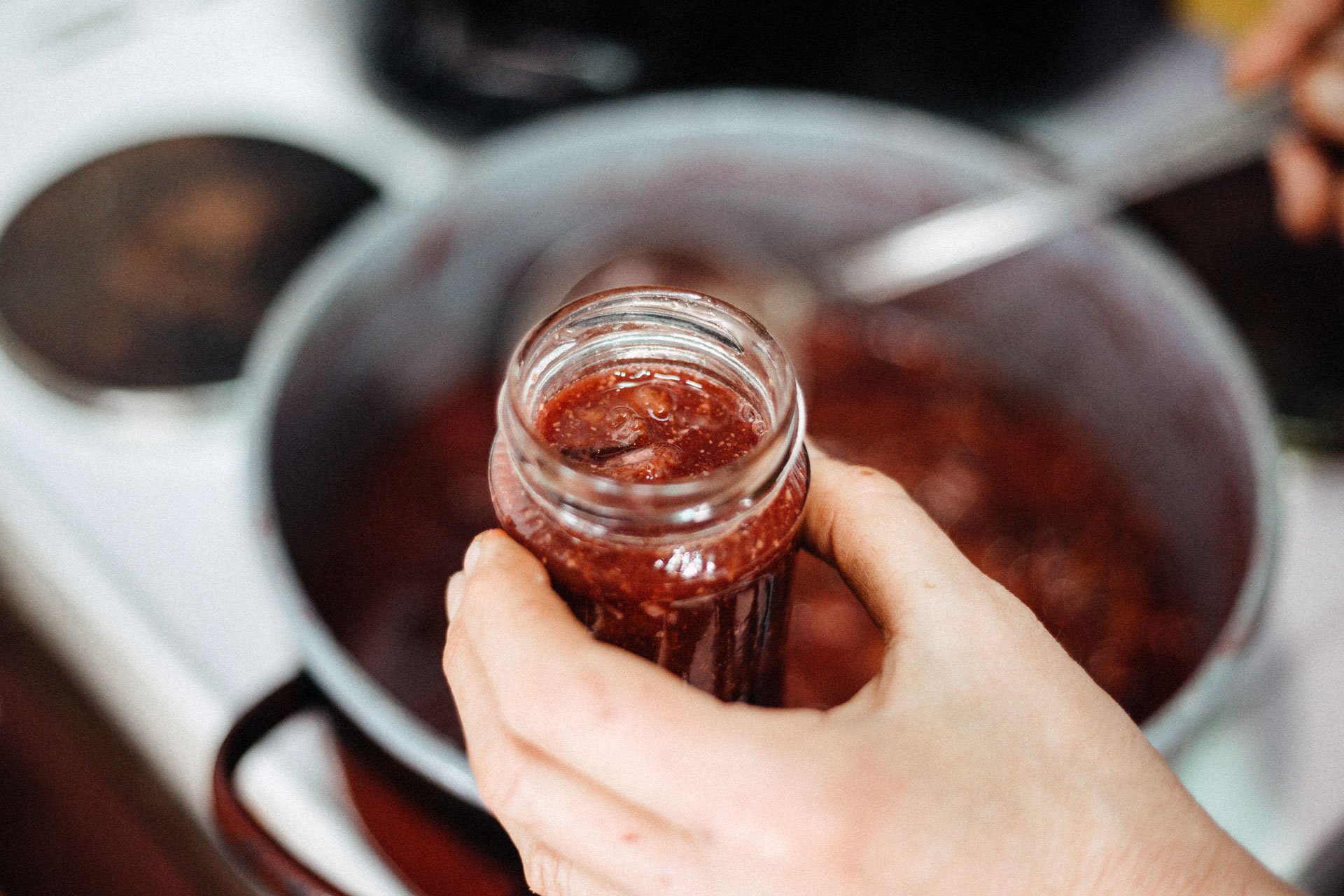Real Food Encyclopedia | Passion Fruit
It’s likely that you’re more familiar with the bright, yellow-orange juice of passion fruit (Passiflora edulis), than you are with the fruit itself. A tropical and subtropical fruit native to South America and North African countries, passion fruit are round fruits with tough outer rinds, typically either deep purple or bright yellow, with juicy, seed-filled centers. While they are delicious and very aromatic, each fruit yields only a small amount of juice — one to two tablespoons per fruit. Although a small amount of this fragrant, sweetly-tart juice can go a long way, the work required means that many people opt to buy it as a juice or frozen puree.
Fun Facts about Passion Fruit:
- If you don’t have a knife but want passion fruit juice, you can use your hands. Cup the fruit between your palms, lock your fingers together, and push your palms together until the skin breaks open. Pry open the fruit with your fingers, watching out for the juice!
- The flavor of passion fruit evokes strong feelings, but that’s not the reason it was named as such. Food historians believe the fruit was named by 16th century Spanish missionaries in Brazil, who thought the plant’s flower resembled the crown of thorns of Christ.
- Not sure if you’ve ever had passion fruit? You likely have, at least as a kid. The fruit has been an ingredient in Hawaiian Punch since it was first created as an ice cream topping in the 1930s.
What to look for when buying passion fruit
Ripe passion fruit should feel plump, firm and heavy for its size. Choose fruit that are fully colored, either dark purple or dark yellow, orange or red, with wrinkly and soft skin. Avoid unripe fruit, which are green or have green spots and those with smooth skin.
Sustainability of passion fruit
Passion fruit is susceptible to a number of diseases and pests, and the crop is notoriously unpredictable and unstable. Commercial producers may use pesticides to mitigate pests; when possible, purchase organically grown passion fruit to avoid exposure to potentially toxic agriculture applications. While their thick peels may protect you from ingesting pesticides, it’s still best to avoid pesticides since they are detrimental to the environment.
Waste
The fruit’s pulp is only one-third of the fruit; the majority of the remaining fruit is the rind, which most people simply discard. A number of solutions have been applied to tackle the issue of waste with the fragrant fruit. In some areas, including Fiji and Brazil, pectin is extracted from the rinds. The rind residue, which contains around five percent protein, can be used as a filler in animal feed. In Hawai’i, the rinds are chopped, dried and combined with molasses to use for cattle or pig feed, or converted into silage. Research has also been conducted to turn the fruit’s rind into food packaging films.
Seasonality
In South Florida and California, they are available from January through November. In Hawai’i, where it’s called lilikoi, the fruit is available year round.
Geography
Brazil is the world’s largest producer and consumer of fresh and processed passion fruit, responsible for roughly 60 percent of the world’s production of the fruit. Ecuador, Colombia and Peru are other top global producers; it’s also grown in Australia, California, South Florida, New Zealand and Hawai’i, among other places.
Eating passion fruit
Storing
Green passion fruit will not fully ripen after being picked; it is edible, but will be very tart. If you purchase unripe fruit — with dark rinds but round and smooth skin — leave them at room temperature, away from sunlight, for a few days until the skin begins to shrivel. Store ripe fruit in the refrigerator for up to one week.
To use, cut a raw the fruit in half, and use a spoon to remove the pulp from the rind.
Cooking
Passion fruit can be used for a variety of recipes, in raw, cooked, frozen and preserved preparations. In Colombia, passion fruit can be used to make esponjados, a flavored custard. A traditional Australian dessert, pavlova, spoons the pulp onto meringue and whipped cream. In Hawai’i, lilikoi butter (and lilikoi bars) are quite popular.
Here are a few other ways to enjoy it:
- Toss into sweet or savory salads. Use it to make salad dressing.
- Spoon raw pulp onto yogurt, chia seed pudding, ice cream, etc.
- Make a syrup with the juice, water and sugar. Use it for cocktails, coolers, stir into sparkling water, or puree into a smoothie or other frozen drinks. Use it in a passion fruit sangria, horchata, or the Brazillian classic cocktail, the caipirinha.
- Use passion fruit pulp for a topping for creamy cheese, like Brie, and crackers.
- Use it as a base flavor for sorbets, ice cream, mousse, custards, puddings and more.
Along with the pulp, passion fruit seeds and flowers are also used. The seeds can be pressed into an oil which is used as a skincare product, while passion flowers are used for herbal tea.
Preserving
Passion fruit is easy to prepare for long-term storage: the fruit freezes well as is. Simply defrost before using. You can also juice the fruit and freeze it. Freezing in ice cube trays, either pure pulp or a one-to-one ratio of passion fruit to water, can make it easy to add it to drinks, sauces and other recipes later.
Making passion fruit butter, in a similar process as lemon curd, is also a popular way of preserving the fruit. Passion fruit can be used for jam, jelly or to add a sweet-tartness to pickling applications.
Nutrition
Passion fruit is a good source of Vitamin A and C, as well as fiber, calcium, iron and potassium.
Top photo by Thidarat/Adobe Stock.


